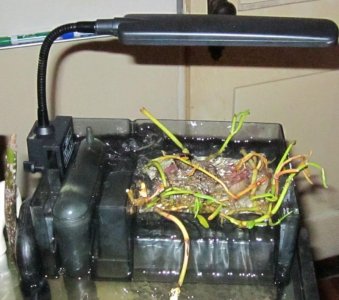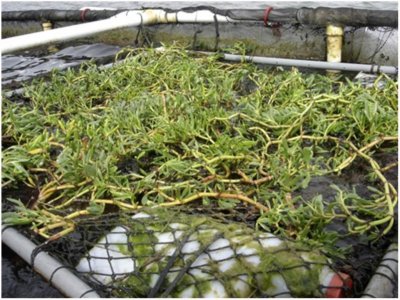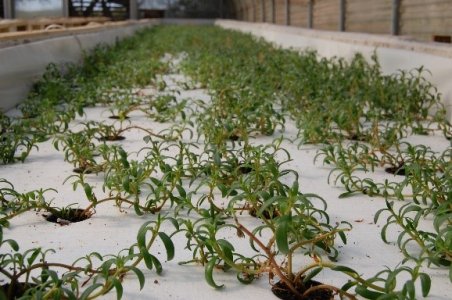MadReefist
New member
I've been digging into some science papers, and after much consideration it seems to me this would trump Mangroves and give about anything else a run for its money.
Before we go too far, I'm hoping we might be able to get some actual (Red Mangrove) data in here. Numbers (nutrient datas); etc. It seems all I ever find is people giving their opinions/preferences about how Rhizophora mangle tends to play out; or articles not much better speaking in abstract. For one thing I'd like to see the methods used so I might recreate some studies with/vs. this Sesuvium portulacastrum (Sea Purslane).
With Sea Purslane I see all the same advantages such as it being a terrestrial meaning all the vegetative growth is quite literally exportational by its very nature, and that other big one being minimal CO2/pH tweaking with the stomata's being above the water line.
Yet from there where R. mangle falls short Sea Purslane steps up:
-Vigorous type growth (roots/stems/leaves).
-A Mint plant style growth habit (lots of nodes enabling rigorous pruning/propagation).
-Far superior heavy metals / toxins phytoremediation [Arsenic (As), Cadmium (Cd), Chromium (Cr), Copper (Cu), Lead (Pb), Mercury (Hg), Nickel (Ni) and Zinc (Zn)] being dubbed an "hyperaccumulator of heavy metals".
-'No' acclimation concerns given the broad diversity of suitable growth environments/substrates/etc, while being "salt-includers" whereas red mangroves are "salt-excluders".
*And you can actually eat it!
There seems to be a total lack of an useful (reef) insights I've managed to dig up doing some googl'ing (outside of a handful of infos about its high use potential in the emerging field of saltwater/marine aquaponics. Really surprised this species hasn't been beaten to death/fully employed yet...
Before we go too far, I'm hoping we might be able to get some actual (Red Mangrove) data in here. Numbers (nutrient datas); etc. It seems all I ever find is people giving their opinions/preferences about how Rhizophora mangle tends to play out; or articles not much better speaking in abstract. For one thing I'd like to see the methods used so I might recreate some studies with/vs. this Sesuvium portulacastrum (Sea Purslane).
With Sea Purslane I see all the same advantages such as it being a terrestrial meaning all the vegetative growth is quite literally exportational by its very nature, and that other big one being minimal CO2/pH tweaking with the stomata's being above the water line.
Yet from there where R. mangle falls short Sea Purslane steps up:
-Vigorous type growth (roots/stems/leaves).
-A Mint plant style growth habit (lots of nodes enabling rigorous pruning/propagation).
-Far superior heavy metals / toxins phytoremediation [Arsenic (As), Cadmium (Cd), Chromium (Cr), Copper (Cu), Lead (Pb), Mercury (Hg), Nickel (Ni) and Zinc (Zn)] being dubbed an "hyperaccumulator of heavy metals".
-'No' acclimation concerns given the broad diversity of suitable growth environments/substrates/etc, while being "salt-includers" whereas red mangroves are "salt-excluders".
*And you can actually eat it!
There seems to be a total lack of an useful (reef) insights I've managed to dig up doing some googl'ing (outside of a handful of infos about its high use potential in the emerging field of saltwater/marine aquaponics. Really surprised this species hasn't been beaten to death/fully employed yet...
Last edited:



